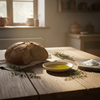Citrus Peeler Essentials: Master Clean Citrus Fast
The Role of the Citrus Peeler in Cocktail Culture
Quick Answer
A citrus peeler is a specialized tool designed to remove thin, uniform strips of citrus zest without the bitter white pith, creating aromatic garnishes that enhance both the flavor and visual appeal of cocktails. Unlike regular knives, citrus peelers provide better control, safety, and consistency for home bartenders.
Key Takeaways
- A citrus peeler is a specialized tool for removing thin, uniform strips of citrus zest without the bitter white pith.
- It creates aromatic garnishes that enhance both the flavor and visual appeal of cocktails.
- Compared to regular knives, citrus peelers offer better control, safety, and consistency.
- Citrus peelers are especially useful for home bartenders looking to improve their cocktail presentation.
Table of Contents
Picture this: you're crafting the perfect Negroni, and you want that Instagram-worthy citrus twist that releases aromatic oils with just the right snap. Or maybe you're channeling your inner mixologist for a dinner party, aiming to impress with professional-looking garnishes that actually taste as good as they look.
Here's the thing—citrus garnishes aren't just pretty decorations floating in your glass. They're flavor powerhouses that can make or break your cocktail experience. The oils in citrus peels contain compounds that literally change how your drink tastes and smells, adding complexity that transforms a good cocktail into an unforgettable one.
But here's where most home bartenders hit a wall: getting those perfect, paper-thin peels without the bitter white pith underneath. We've all been there—wrestling with a paring knife, ending up with thick, chunky peels that taste more like disappointment than citrus magic. Or worse, accidentally nicking a finger while trying to achieve bartender-level precision.
The secret weapon? A proper citrus peeler. This isn't just another kitchen gadget—it's your ticket to consistently beautiful, aromatic garnishes that'll have your guests asking, "How did you do that?"
Whether you're reaching for a citrus peeler tupperware style for everyday use, exploring professional-grade options, or even considering alternatives like the citrus peeler pampered chef offerings, the right tool makes all the difference between amateur hour and cocktail artistry.
Think of citrus peelers as the bridge between your cocktail ambitions and actual results. They solve the fundamental challenge every home bartender faces: how to extract those precious aromatic oils while creating visually striking garnishes that don't taste like you're chewing on tree bark.
From classic citrus peeler cocktail applications like the perfect Manhattan twist to more adventurous garnish techniques, mastering this simple tool opens up a world of creative possibilities. Ready to transform your home bar game? Let's dive into everything you need to know about choosing, using, and mastering the citrus peeler.
What Is a Citrus Peeler?

A citrus peeler is a specialized kitchen tool designed specifically for removing the outer zest layer of citrus fruits while avoiding the bitter white pith underneath. Unlike your standard vegetable peeler, citrus peelers are engineered for precision, creating thin, uniform strips that maximize aromatic oil extraction.
Key Fact: The average citrus peel contains over 90% of the fruit's aromatic compounds, making proper peeling technique crucial for cocktail flavor development.
Primary Uses in Cocktail Making
Professional bartenders and cocktail enthusiasts rely on citrus peelers for several essential garnish types:
- Citrus twists: The classic spiral garnish that releases oils when twisted over your drink
- Citrus swaths: Wide, flat pieces perfect for expressing oils and dropping into the glass
- Ribbon garnishes: Long, continuous peels that create elegant visual appeal
- Aromatic zests: Fine strips that add subtle citrus notes without overwhelming the drink
Why Not Just Use a Knife?
You might be wondering why you can't just grab that trusty paring knife from your drawer. Here's the reality: while knives can technically remove citrus peel, they're not optimized for the job.
Citrus Peeler Advantages
- Consistent thickness control prevents bitter pith inclusion
- Ergonomic design reduces hand fatigue during prep
- Safety features minimize accidental cuts
- Specialized blade angle maximizes oil extraction
Knife Limitations
- Requires advanced knife skills for consistent results
- Higher injury risk, especially with small citrus fruits
- Difficult to achieve uniform thickness
- Time-consuming for multiple garnishes
The bottom line? A dedicated citrus peeler transforms what could be a frustrating, inconsistent process into something smooth, safe, and reliably professional-looking. Whether you're prepping garnishes for a single cocktail or batch-preparing for a party, the right tool makes all the difference in both results and confidence.
Types of Citrus Peelers and Alternatives
Not all citrus peelers are created equal, and the cocktail world has embraced some surprising alternatives that might change how you think about garnish prep. Let's break down your options, from traditional favorites to bartender-approved innovations.
Traditional Y-Peelers - The Familiar Choice
The classic Y-shaped vegetable peeler is probably sitting in your kitchen drawer right now. Popular models from other popular brands have earned their place in both home kitchens and professional bars for good reason.
- Widely available and budget-friendly (typically $8-15)
- Familiar grip that most people already know how to use
- Sharp, replaceable blades that handle citrus skin efficiently
- Dishwasher-safe construction for easy cleanup
Safety Note: Y-peelers require careful handling with small citrus fruits like limes. The exposed blade can catch fingers if you're not paying attention, especially when working quickly during party prep.
Cheese Slicers - The Bartender's Secret Weapon
Here's where things get interesting. Professional bartenders have discovered that cheese slicers often outperform traditional peelers for citrus work. The larger handle provides better control, and the blade positioning reduces injury risk significantly.
"I switched to a cheese slicer after watching a bartender at Death & Co use one. The control is incredible, and I haven't cut myself once since making the switch." - Cocktail enthusiast review
The key advantage? The cheese slicer's design keeps your fingers naturally away from the blade path while providing steady, even pressure across the citrus surface. This translates to more consistent peel thickness and fewer accidents during busy cocktail service.
Professional-Grade Citrus Peelers
Purpose-built citrus peelers from another leading provider represent the premium end of the market. These tools are engineered specifically for cocktail garnish work, with features that matter when you're peeling citrus regularly.
- Ergonomic handles designed for extended use without fatigue
- Precision-ground stainless steel blades that stay sharp longer
- Optimal blade angle for maximum aromatic oil extraction
- Professional aesthetics that look at home in upscale bar settings
Professional Peeler Advantages
- Consistent results with minimal technique required
- Durable construction withstands heavy use
- Comfortable grip reduces hand strain
- Designed specifically for citrus characteristics
Considerations
- Higher upfront cost ($25-50 range)
- May be overkill for occasional home use
- Requires proper storage to protect blade
- Limited availability compared to standard peelers
Channel Knives for Ribbon Garnishes
When you want to create those elegant spiral ribbons that wrap around a martini glass, a channel knife becomes essential. This specialized tool cuts a continuous groove in the citrus peel, creating long, uniform ribbons perfect for sophisticated presentations.
Channel knives excel at creating Instagram-worthy garnishes but require practice to master. Start with room-temperature citrus for easier handling and more flexible peels.
Choosing the Right Tool for Your Needs
Your ideal citrus peeler depends on how often you're making cocktails and what level of garnish sophistication you're aiming for. Occasional home bartenders might find a quality Y-peeler or cheese slicer perfectly adequate, while serious cocktail enthusiasts will appreciate the precision and comfort of professional-grade tools.
Consider your typical citrus usage: if you're mainly working with lemons and limes for classic cocktails, a traditional peeler handles the job beautifully. But if you're experimenting with grapefruit twists, orange ribbons, and complex garnish work, investing in specialized tools pays dividends in both results and enjoyment.
Maintenance, Storage, and Safety

A quality citrus peeler can last for years with proper care, but neglecting maintenance will leave you with dull blades and frustrating results. Here's how to keep your tools performing at their peak.
Cleaning Best Practices
Most citrus peelers are dishwasher-safe, but handwashing preserves blade sharpness significantly longer. The high heat and harsh detergents in dishwashers can dull metal edges and degrade handle materials over time.
Rinse your peeler immediately after use to prevent citrus oils from hardening on the blade. A quick scrub with warm soapy water removes residue without dulling the cutting edge.
For stubborn citrus oil buildup, a paste of baking soda and water works wonders. Avoid abrasive scrubbers that can scratch stainless steel surfaces and create places for bacteria to hide.
Safe Storage Solutions
Proper storage prevents accidents and protects your investment. Magnetic knife strips work excellently for metal peelers, keeping blades visible and easily accessible. Drawer organizers with dedicated slots prevent tools from banging against each other and dulling edges.
- Magnetic strips keep blades safely separated and visible
- Drawer trays with individual slots prevent edge damage
- Blade guards protect both the tool and your fingers
- Dedicated bar tool rolls for serious cocktail enthusiasts
Safety First: Never store citrus peelers loose in kitchen drawers. The sharp blades can cause serious cuts when you're reaching for other items.
Troubleshooting Common Issues
When your peeler starts shredding fruit instead of creating clean strips, it's usually a blade sharpness issue. Some high-end peelers have replaceable blades, while others require complete replacement when they dull.
If your peeler cuts too deep and includes bitter pith, adjust your angle and pressure. The blade should glide across the surface, not dig into the fruit. Practice with less expensive citrus until you develop the right touch.
Signs of a Good Peeler
- Creates paper-thin, uniform peels
- Glides smoothly without catching
- Leaves minimal pith on the peel
- Comfortable grip during extended use
Time to Replace When
- Blade tears or shreds citrus skin
- Handle becomes loose or cracked
- Rust appears on metal components
- Consistent peel thickness becomes impossible
Elevating Your Cocktail Garnish Game
Mastering citrus peels transforms your cocktails from good to memorable. The difference between a hastily cut lemon wedge and a perfectly expressed orange twist can elevate your entire drinking experience.
Why Technique Makes the Difference
The best citrus peeler cocktail garnishes aren't just about looks—they're about aromatics. When you twist a fresh peel over a drink, you're releasing volatile oils that hit your nose before the liquid touches your lips. This sensory preview primes your palate for what's coming.
"A proper citrus twist should be large enough to express oils but thin enough to avoid bitterness. The goal is pure citrus essence, not a mouthful of pith." - Professional bartender technique
Whether you're using a citrus peeler tupperware model for durability or a citrus peeler pampered chef design for reliability, the technique remains consistent: steady pressure, confident strokes, and immediate use for maximum impact.
Building Confidence Through Practice
Start with room-temperature citrus—it's more forgiving and creates more flexible peels. Work your way up to chilled fruit as your technique improves. The muscle memory you develop will serve you well when you're making drinks for guests and timing matters.
Pro tip: Practice makes perfect, but the right tool makes practice enjoyable. A quality citrus peeler turns what could be a frustrating task into a satisfying ritual that enhances your entire cocktail-making experience.
Your Path to Citrus Mastery
The journey from basic citrus cutting to creating professional-quality garnishes doesn't require years of bartending school—just the right tools and willingness to experiment. Whether you choose traditional peelers, embrace the cheese slicer innovation, or invest in professional-grade equipment, the key is finding what works for your hands and your cocktail style.
Remember that even professional bartenders started with basic tools and developed their skills over time. Your citrus peeler is just the beginning—it's your creativity and attention to detail that will set your cocktails apart. Start with the classics, master the fundamentals, then let your imagination guide you toward garnishes that surprise and delight.
Frequently Asked Questions
What is the best tool to peel oranges?
The best tool to peel oranges is a citrus peeler—a small, handy gadget designed specifically to cut through the orange’s tough skin without damaging the juicy fruit inside. Its curved blade makes it easy to score the peel, allowing you to separate the zest from the fruit quickly and cleanly, turning a potentially messy task into a breeze.
What is a citrus peeler used for?
A citrus peeler is used to effortlessly remove the outer rind of citrus fruits like oranges, lemons, and limes. It’s designed to slice through the tough, bitter peel without cutting into the pith or fruit, making it perfect for zesting, garnishing, or preparing citrus segments for recipes without the hassle or mess of using a knife.
How do you peel citrus?
To peel citrus, use a citrus peeler to score the skin gently, creating shallow cuts around the fruit. Then, insert the peeler’s tip under the edge of the scored peel and carefully lift it away from the fruit in sections. This method helps you remove the peel without damaging the juicy interior or getting your hands sticky, keeping things neat and efficient.
What is citrus peel called?
Citrus peel is commonly referred to as the zest when you’re talking about the thin, colorful outer layer rich in essential oils and flavor. The thicker white layer underneath is called the pith, which is bitter and usually removed or avoided in cooking. Together, peel encompasses both layers, but zest is the prized part for adding bright, aromatic notes to dishes.
Is there a trick to peeling oranges?
Yes! The trick to peeling oranges is to start by rolling the fruit firmly on a countertop to loosen the skin from the flesh. Then, use a citrus peeler or your fingers to score and separate the peel in sections, working from top to bottom. This technique minimizes mess, keeps the segments intact, and makes peeling as satisfying as a pro’s touch.
What is the easiest way to remove orange peel?
The easiest way to remove orange peel is with a citrus peeler, which cuts through the skin cleanly and lets you lift the peel off in manageable strips. If you don’t have one handy, rolling the orange to loosen the peel and then gently prying it off with your fingers works great too—no sticky fingers or wasted fruit required.




